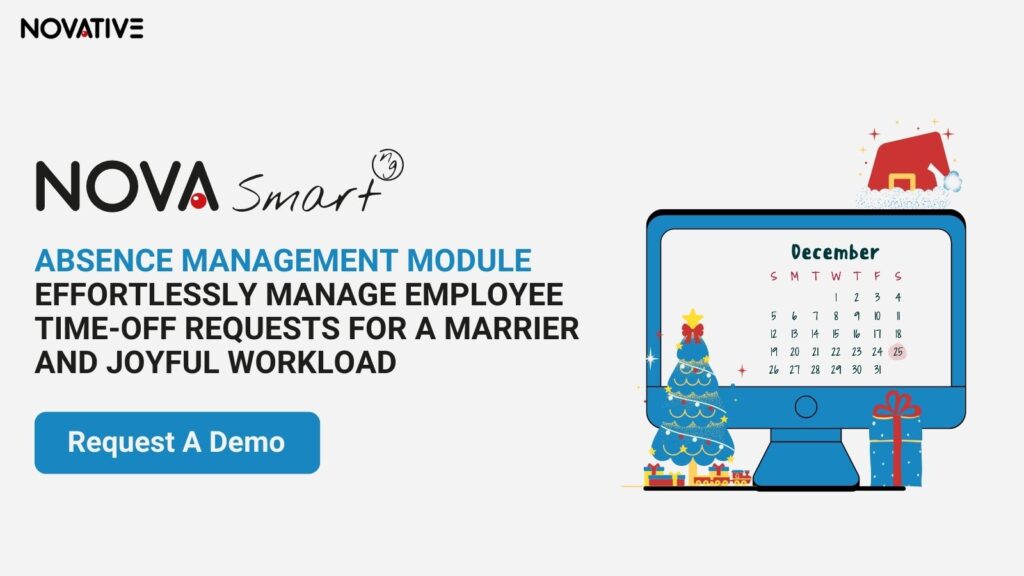With the holidays’ festivities approaching, it’s not unusual to see decorated desks left unattended. It’s the perfect time for people to go on trips or enjoy quality time with family and friends. Yet, for employers, it’s like everyone’s trying to catch the same holiday wave, and suddenly, scheduling turns into a bit of a festive puzzle.
So not to have a Silent night at the office while keeping your employees happy you can consider these 7 PTO polices that will get you through this PTO rush.
#1 Establish a cutoff date
Establishing a clear timeline for PTO approvals and requests within the team assures a celebration devoid of eleventh-hour astonishments. This a win-win situation, ensuring a holiday work crew’s precision by instituting unequivocal deadlines.
Maintaining proactivity in PTO processing becomes essential, guaranteeing seamless approvals and empowering employees to strategically organise around their schedules.
#2 Adapt a floating holiday system
In today’s workplace, Diversity is at its peak, reflecting varied cultural and personal backgrounds. However, during major holidays with extended closures, employees may feel pressured to use vacation time, even if these holidays hold little personal significance.
Introducing floating holidays eases the Christmas time-off rush and adds flexibility for everyone. For those not celebrating Christmas, it’s a chance to customize time off to personal preferences.
Imagine an employee happily taking time for family or cultural celebrations, creating joyful moments without you having the stress of scheduling gaps created by the holidays.
#3 Set a plan for Requests Prioritisation
Navigating time off during the holidays demands a fair process. Defining the criteria, you use to approve or deny leave ensures a seamless balance between festive celebrations and smooth operations.
You can take the traditional route, basing your assessment on employee hierarchy or seniority, or on a first-come, first-served basis, but this system might lead to operational disruptions, overlooking individual circumstances or varying workloads.
Embracing modern approaches like a rotational schedule for time off, aligning with business needs, and encouraging team coordination ensures that everyone gets a turn, fostering appreciation among your team.
#4 Encourage flexibility
Since everyone has different holiday plans, giving your employees some options to alter or adapt their workdays to match their needs to celebrate their usual holiday traditions while making sure you have enough employees on staff. You might consider:
- Partial-Day PTO: Employees can contribute during crucial work hours while maintaining productivity levels even during peak holiday periods.
- Remote work for those employees who can perform their tasks outside of the office allows them to participate in holiday festivities without taking a day off.
- Shift swaps Employees can swap shifts to accommodate their holiday preferences.
For example, an employee can celebrate their usual holiday traditions then have a later shift during the day.
#5 Offer Incentives and Rewards for Working
While the idea of working during the holiday season might not be everyone’s cup of cocoa, high consumer demand requires us to be ready with more productive workers.
So, to encourage workers to take up the hours during the season, you might consider some incentives like:
- Cash bonuses whether it’s a few dollars or a large sum it adds a touch of sparkle to your employee’s hard work
- Holiday pay rate Holiday pay is a great way to make it worth your employees’ time.
- Parties and events Alleviate the potential stress of working during busy holiday periods with celebrations in the workplace, creating a festive atmosphere.
- Extra PTO encouraging employees to approach holiday shifts with a positive mindset, knowing that they have the opportunity to relax and rejuvenate afterward.
#6 Implement a clear request system
But before doing all the previous you must have a seamless process for employee time-off requests. This process includes guidelines outlining the method for requesting time off, identifying the designated recipient for these requests, and articulating the criteria governing the approval or rejection of vacation leave.
Conclusion - 6 PTO polices for a smooth holiday season
While using an Excel spreadsheet may seem convenient, it often proves time-consuming and susceptible to human errors, potentially leading to scheduling mishaps. Opt for a more efficient and foolproof approach to ensure a smoother holiday season.








